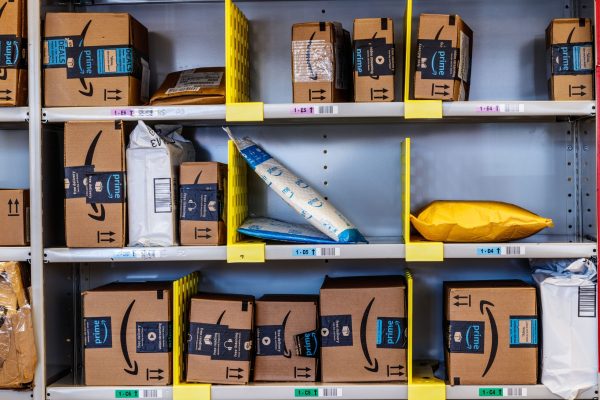COVID-19 has brought significant changes to working practices across every industry sector. With a marked shift towards online shopping, the role of the warehouse is more important than ever. Increased demand coupled with a need for social distancing presents a number of practical and logistical challenges.
There are a number of approaches that you can take to adapt your warehouse – whilst also increasing productivity and saving space
1. Space out work areas
This is perhaps the most obvious step to take, and the easiest to implement. Visual social distancing cues on the ground or floor are already a common and familiar sight in public spaces, ranging from supermarkets to restaurants, so it makes sense to mark out workstation areas in the same way. If possible, it’s a good idea to use physical partitions such as plexiglass dividers.
2. Implement a one-way system
Following on from this, a designated traffic flow for your employees further limits contact and reduces the risk of exposure. Use a map of your facility to look at the current traffic patterns and establish how to change them from two-way movement to a one-way street.
3. Set up sanitisation stations
Hand sanitising points are increasingly ubiquitous. In a warehouse situation, there may also be the additional need to sanitise equipment and tools that are shared by multiple employees. Wherever possible, designate tools for a specific user for their shift, or put in place dedicated tool sanitisation stations.
4. Revise your shift patterns
The supply chain is one area where employers have found themselves needing to take on extra staff to meet demand, adding to the challenge of social distancing. Consider splitting your workforce into multiple shifts, to reduce the amount of people onsite at a given time. This reduces the risk of exposure and also adds a level of business resilience; a potential outbreak could be contained to a single shift rather than affecting the whole warehouse.
5. Schedule breaks and working hours
Staggering start and finish times and break times goes hand in hand with this. If it’s not possible to split the workforce into different shifts, this can still contribute to the social distancing; used in concert with multiple shifts, it also gives a greater degree of flexibility in terms of operating hours.
6. Zero-contact completion
Many suppliers have adopted contactless deliveries in the last few months. That aspect can also be extended to the warehouse. Setting up a drop point for completed orders can minimise the need for physical interaction, and automation solutions such as a conveyor belt reduce the risk either further.
7. Outsource your warehousing
The safest option of all is to delegate your warehousing to a partner. Sprint Logistics can provide effective warehousing solutions, globally. Our London warehouse solutions can handle over 6,000 pallets of stock, and our warehousing network extends across Europe, the US and the Middle East.
Sprint Logistics: effective warehousing solutions
From local markets to international shipping, Sprint Logistics has the expertise, infrastructure and technical capabilities to support your business’ distribution needs. Our extensive distribution network covers over 200 countries with flexible services designed to suit you, whether you’re sending a one-off shipment or ongoing campaigns.
Contact us today to find out how our warehousing solutions can support your business.




